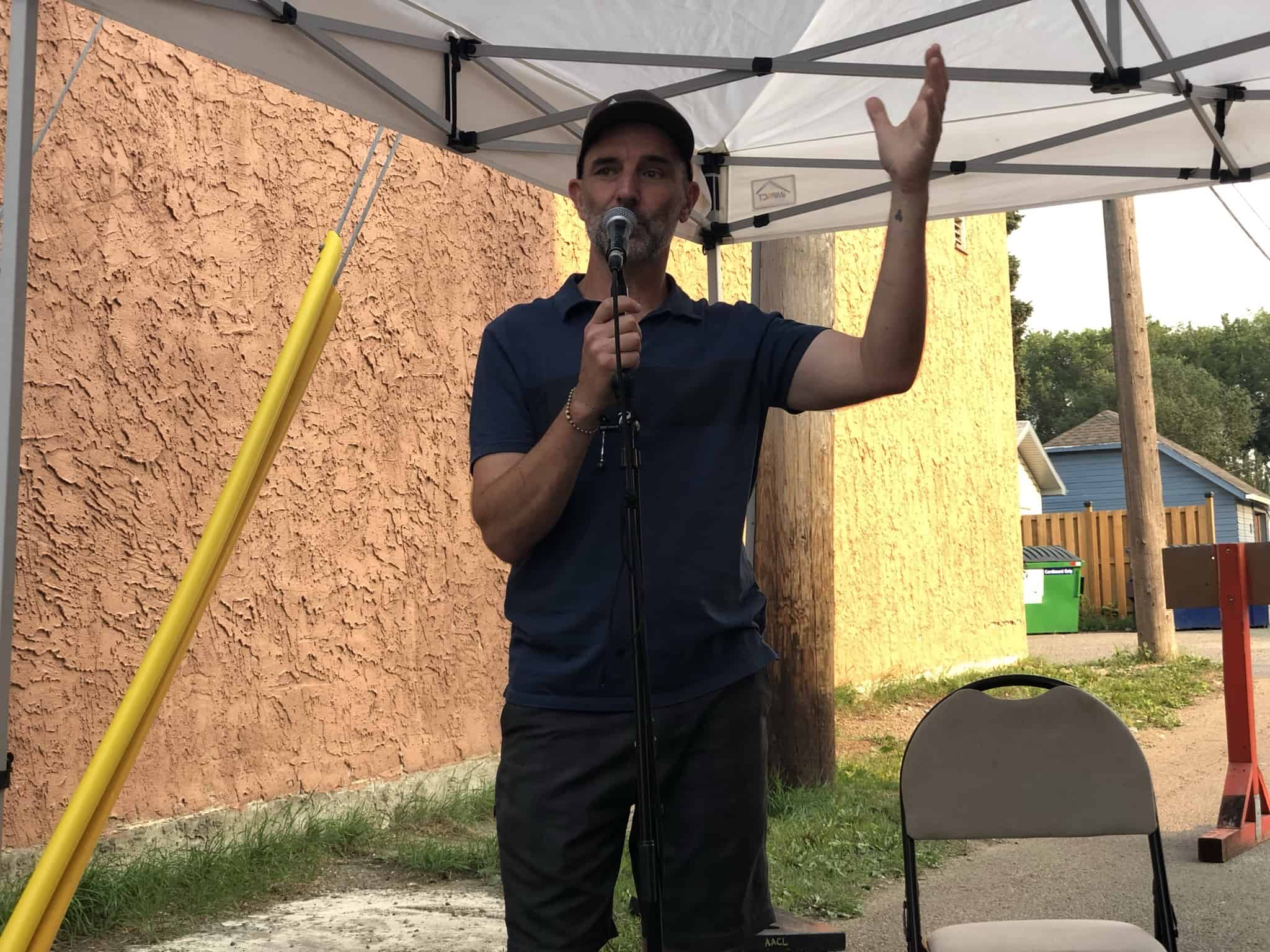Telling stories is inherently human
As soon as toddlers master full sentences, they often regale any listening ear. Brad Woods, from Guelph, Ontario, likely told stories while still in diapers. “I love listening to stories. The more you listen, the more you want to tell good stories.” He jokes it is the “opposite of a vicious cycle; it’s a constructive cycle.”
Stopping in Edmonton to perform near The Carrot Coffeehouse on Aug. 5 for Arts on the Ave’s event Tell Good Stories, his daughter appeared as a key player in one story.
Woods and his wife engaged in the classic Canadian summer road trip from Ontario to B.C., where his daughter is currently interning on a farm. You might call it a word trip. He has been offering readings and storytelling across Canada.
On the return leg of their excursion, Woods needed to hightail it out of Edmonton to offer a storytelling workshop in Winnipeg on Aug. 8. He took his time, though, with his audience. After each story, he posed thought-provoking questions, sparking interesting conversations.

His passion for oral traditions shines through each performance. “I record some film and writing, but I’m 99 per cent focused on oral traditions.” Woods doesn’t believe in dwindling attention spans. “We choose a short or bad attention span.” He is absolutely right that performers must be excited about their own stories in order to build excitement in an audience.
If you look at the stories movies tell, three themes Woods referred to appear repeatedly: truth, time, and happiness.
As Jonathan Gottschall, author of The Storytelling Animal: How Stories Make Us Human writes, “We are, as a species, addicted to stories. Even when the body goes to sleep, the mind stays up all night, telling itself stories.”
Woods says,“Telling stories makes us human. There are six elements to a story.” Then he immediately told a story that included all six elements: an interesting or exotic location, a crisis, a solution, a beast of the air or water, a storm or an act of God, and music.
His advice to begin your own storytelling tradition is to think about where you are in the story and leave space for others to imagine themselves. “Stories allow people to belong.” They also allow for individual interpretations.
A story about his daughter has meant different things to audiences. One example is how parents have to let go in stages as a child takes on bigger age-appropriate challenges farther and farther from home. In the story, his daughter wants to believe in mermaids, and travels to ever greater bodies of water uttering the repeating refrain to onlookers, “If mermaids don’t exist, I don’t want to go home.” After telling the mermaid story at one event, he heard a grief counsellor used it in her practice. The audience agreed it could help people grieving, be a parenting story, or be an emotional management story. For Woods, it was a moment of warmth for him and his daughter.
After sharing the seven types of stories (tragedy, quest, comedy, voyage, rebirth, return, and rags to riches), he left the audience with some final thoughts. Even though “time is a non-renewable resource, it is impossible to waste time. The most mundane experiences can hold lessons.” That is where we find our stories that are gifts people can hold forever.







